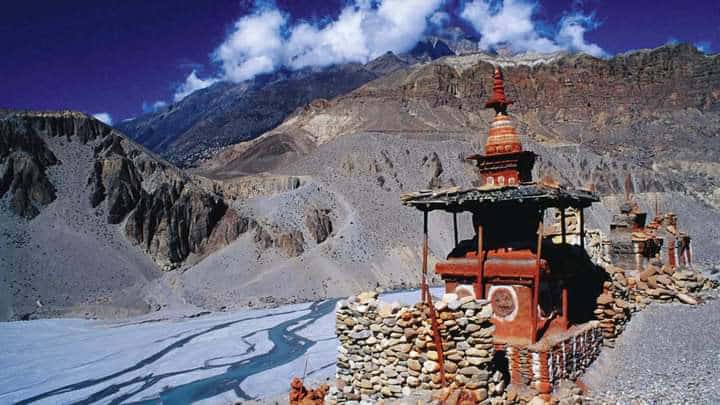The climate of Nepal is categorized under five climatic zones: tropical and subtropical zones (below 1,200m), temperate zone (1,200 to 2,400m), cold zone (2,400 to 3,600m), subarctic zone (3,600 to 4,400m), and the Arctic zone (above 4,400m). Consequently, the Terai is the hottest place in summer, whereas the high Himalayas remain cold all around the year. It is customary in Nepal to divide the time around the year into five seasons: spring, summer, monsoon, autumn, and winter.
In the Terai, summer temperatures can reach 37 degrees centigrade or even higher, whereas in winter they vary from 7 to 23. The temperature of hills remains temperate mostly throughout the year, whereas in high mountain regions, winters are more severe. Except in the rainy season which lasts three to four months from June to early September, the days in Nepal are bright and sunny. This allows visitors to enjoy the sceneries around the year. Even in the rainy season, there are places in Nepal like Upper Mustang and Dolpa, the hubs of Tibetan culture, which remain in a rain shadow. Trekking to these areas makes an excellent choice in the rainy (monsoon) season.
Customarily the best trekking season in Nepal is autumn, when the sky is at its clearest after long monsoon rains, and when greenery greets you from all around after the nourishing rains. This season is followed by spring and summer when the slopes of hills and mountains burst into a colorful spectacle with rhododendrons blooming all around. But Nepal can be visited all around the year where different activities are available for your entertainment and refreshment.
The Himalayas of Nepal are not just the Mecca for adventure tourism like mountain trekking and mountaineering expeditions; they serve as the natural barrier to the cold wind blowing from Central Asia in winter, thus keeping the hilly region temperate. In monsoon, the wet winds blowing from the Bay of Bengal are again stopped by them, thus causing rainfall in the south. In short, Nepal is just 150 kilometers wide on average, but due to its staggering difference in altitude, almost all kinds of climates are found here, ranging from tropical to polar.


